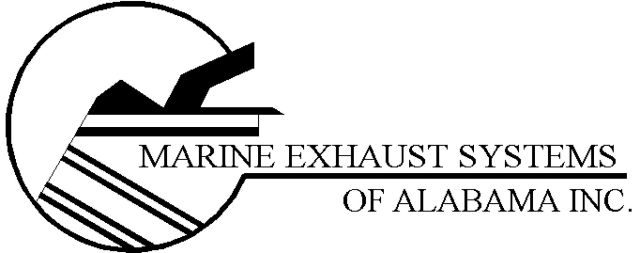Replace these silencer models
with this one
Type
NELSON
SILEX
EM
PRODUCTS
BURGESS
MANNING
![]()
Standard Exhaust Silencers
“100” level
411__/431__
JI
GEN-Y
JIE/JIS
BMD
M11
“200” level
412__/432__
JA
JRE/JRS
DRU
BMC
M21
“300” level *
413__/433__
JB
JCE/JCS
BMB
BMI
M31
“300” level **
413__/433__
JC
JHE/JHS
DCU
BMA
M41
“400” level
414__/434__
JD/JDDS
JDDPR
BEO
M51
Low Pressure Drop Exhaust Silencers
NTS20
JAT
BMCT
MT21
NTS30
JBT
BMBT
MT31
JCT
BMAT
MT41
JDT/JDDT
BEOT
MT51
Spark Arresting Exhaust Silencers
“100” level
493__/496__
JASA
DSU/SSU
DPSC
MSA1
“200”/”300” level
494__/495__/497__/498__
JBSA
SRU
DPSS
MSA2
JCSA
MSA3
JDSA/JDDSA
MSA4
Straight Through Acoustical Packed Silencers
JGDA
TAU
LCA
FPE
TBU
FPE2
* For sizes 4” – 12” Nelson level “300”, use Maxim model M31
** For sizes 14” and larger Nelson level “300”, use Maxim model M41
BASIS FOR COMPARISON:
All silencer designs will perform differently depending upon the characteristics of the engine, the exhaust system layout, and the gas velocity and temperature within the silencer. This enables some tests to be performed in which an inferior silencer can be made to appear to out-perform a superior silencer.
The fundamental firing frequency of most stationary reciprocating engine and marine engine applications is in the 60 to 300 hertz range. Maxim silencers are optimized in internal design geometry to provide the best overall attenuation possible in this frequency range to offer predictable, dependable attenuation of both high and low frequency noise. For over 100 years, Maxim’s experience in this field enables us to confidently rate our indicated models as being equal to or better than the competitor’s silencer models shown in the cross reference table.
HOW TO COMPARE DIFFERENT MODELS OF EXHAUST SILENCERS:
Most silencer designs will be reactive (chamber) types in which no absorptive materials are used. These can be made very effective in the low frequencies with effectiveness also extending into the mid and high frequencies by including more chambers or by incorporating special internal features. Reactive silencers are popular for the following reasons:
-
The reactive silencer will not lose effectiveness with time due to internal fouling or loss of acoustical media.
-
Most reciprocating engine exhaust noise has a fundamental frequency in the low frequency end of the spectrum where the reactive silencing design feature is most effective.
-
The performance to cost ratio for reactive silencers used in reciprocating engine exhaust service is higher than for the other types of designs.
This chart compares other silencers with Maxim silencers of either chamber type silencer designs utilizing two or more chambers or straight through designed silencers utilizing acoustical packing material.
The volume occupied by a given silencer size (nominal pipe connection size) tells much about how effective that model can become if its internal design is optimized for a specific application. The general rule is that a given silencer model can be made more effective if it can have its volume increased:
-
Larger body diameters enable higher amounts of noise reduction at all frequencies.
-
Longer silencer lengths can also enable more noise reduction, especially in low frequency bands, because chambers are made longer or because more chambers are added.
A decision as to whether to add more chambers or whether to make the chambers longer must be decided by analysis of the un-silenced exhaust noise spectrum of the engine. Simply adding more chambers or other internal features without increasing the volume occupied by a silencer will not increase the noise reduction. In many cases, the performance will be decreased. In some non-typical engines that have fundamental frequencies above 300 hertz or that have a higher than usual amount of high frequency noise, a smaller silencer that has more chambers or one that uses acoustical packing may be tested to compare favorably with a larger Maxim reactive silencer. However, it should be known that in the majority of typical reciprocating engine applications, the Maxim units will perform better than any smaller silencers or silencers of the same size that have been divided into more chambers.
Maxim Silencer Advantages:
Compare weights of comparable silencer models – Is the Maxim unit heavier?
This is because the Maxim has more substance, more metal which translates in to longer service life and more product for your money.
Maxim M21, M31, MSA1, and MSA2 silencers in stock size ranges are single wall shells constructed of heavy wall, 12 ga. (.105″ nom.) thickness.
All Maxim M41 and M51 silencers are constructed with standarddouble wrap shell to minimize shell radiated noise all at no extra cost.
©Copyright 2005 Maxim Silencers, Inc.
![]()
Home
Please call or E-MAIL
Mark
Marine Exhaust Systems of Alabama, Inc.
1-251-928-1234
to place an order

